The world is divided between soothsayers and naysayers. Visionaries and reactionaries. Agents of change and keepers of the peace. Clairvoyants gazing into crystal balls and collectors lovingly rearranging mementos in curio cabinets. While it takes all types to make the world go ’round, I know which I’d rather have in charge of my organization’s innovation initiatives or even the strategic planning process. Which would you?
The distinction between the two — and for me, the advantage of one over the other — comes down to a simple matter of perspective. But this simple shift in perspective truly makes a world of difference.
Naysayers solve problems from the standpoint of the present.
At best, their focus is on improving upon the current state. These are the people who build their plans around safe, incremental growth (10% growth never got anyone fired, right?); that eschew the truly new for a bit more of the same. At worst, they simply aim to maintain the status quo. These are the folks who ignore new competitors, balk at disruptors, deny that the assumptions upon which their businesses are built have become the quicksand that threatens to suck their businesses under. And so when faced with radical innovations or unconventional ideas, all they see are obstacles. They’re very good at explaining why breakthrough ideas won’t work— can’t work. They don’t just believe this. They know it. And they’re only too happy to prove it to you.
Soothsayers, on the other hand, solve problems from the perspective of the future.
Rather than starting with an understanding of the current state, they begin with a vision for a preferred future state. They go beyond what they know to be true, to consider what they imagine to be possible. When facing radical innovations and unconventional ideas, they don’t see obstacles – they see opportunities. Soothsayers do more than just maintain the business they have; they create the business they want. They’re very good at determining how breakthrough ideas could work — should work, will work. And they’re only too happy to show you.
Some might say that any good business needs a healthy blend of both — hard-nosed realists to balance out the starry-eyed visionaries. Maybe that’s true. Who am I to be a naysayer? I think back to my time at Arbitron, where my challenge was to launch new businesses that tapped into opportunities arising from the commercialization of the internet. It was the hard pushback from my curmudgeonly, bottom-line driven CFO (a man I quietly referred to as “Dr. No” when confiding in my team behind closed doors) that forced me to apply the rigor necessary to get my CEO to say “yes” to my ideas for the future. In that case, there was clear value in balancing between the two extremes.
But when the naysayers outweigh and outvote the soothsayers in any organization, the result isn’t safety. It’s stasis. And that is the riskiest position of all.





